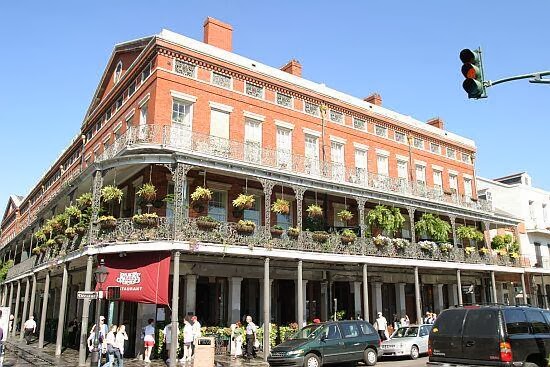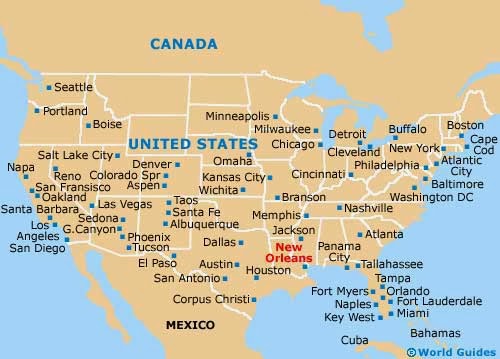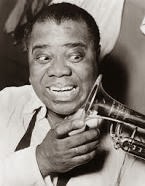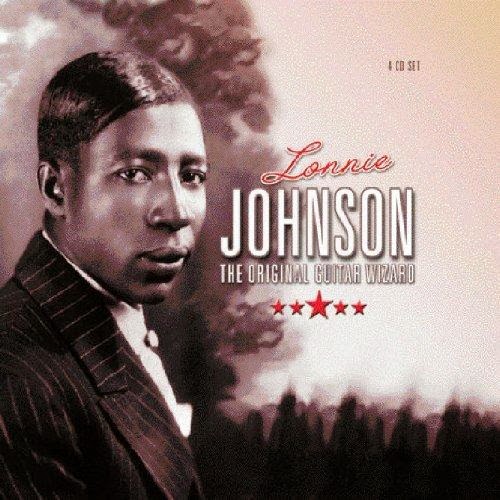History’s great blues cities: New Orleans.
UPDATED 19 JULY 2017
Once described as a Mediterranean port transplanted into the Gulf of Mexico, New Orleans has always been, and felt, different to the rest of America’s South.

As far back as the eighteenth and early nineteenth centuries, when Louisiana was under French and Spanish rule, slaves were allowed to congregate freely in Congo Square, in New Orleans’ Treme district, on Sunday afternoons. Here, they would dance, sing and perform traditional West African music while intrigued white residents watched on for their amusement. No such leeway was granted for slaves in the old South.
 |
| Congo Square in the 1700s from an 1876 engraving |
After Napoleon sold Louisiana to the USA in 1803 to fund his failed European takeover, Congo Square gradually lost its impetus. All traces of African song and dance had vanished by the time of the American Civil War in 1861. While some experts claim the blues started in Congo Square in New Orleans, I’m convinced the blues emerged mainly from African-American song influenced by white American music in the USA rather than African-American song formed during Louisiana’s French and Spanish eras. I explain why in America’s Gift. That said, W.C. Handy did say his famous ‘St. Louis Blues’, published in 1914, had a touch of the tango – or Spanish Tinge as they called it then – about it. But those influences were from Cuba rather than New Orleans.
 |
| Louisiana once stretched from New Orleans upwards to Canada |
In the brothels of 1890s New Orleans, teenage pianists like Jelly Roll Morton entertained customers with an unnamed blend of ragtime, barrelhouse and honky tonk that later became known as blues and jazz. Any ragtime in the New Orleans air originated in Kentucky or St. Louis; barrelhouse and boogie woogie piano in Texas; and honky tonk in San Francisco. But the addition of brass to string bands – the dance orchestras of their day – was pure New Orleans.
 |
| From the mists of time. That’s Buddy Bolden, top, second left |
The legendary Buddy Bolden is thought to be the first bandleader to blend ragtime with the rural folk music he’d heard on the plantations, and the first musician to improvise his horn-playing to sound like what we now call blues. This was around 1895 but, unfortunately, whatever recordings there were remain unknown. Driven on by acoustic rhythm guitarists like Charlie Galloway or Jefferson Mumford, bands like Bolden’s instigated the blues that became New Orleans jazz.
They played in dance venues thick with the stench of booze and sweat. So much so, the most famous of these was nicknamed Funky Butt Hall which, incidentally, was one of the first
 |
| Louis Armstrong |
known mentions of that now common musical term, ‘funk’. Buddy Bolden was the
first in a long line of New Orleans horn greats, immediately followed by Joe
‘King’ Oliver, Bunk Johnson and Louis Armstrong, originally pronounced ‘Lewis’,
according to his mother, “because we weren’t French”.
Oliver, Armstrong, and Louisiana trombonist, Edward ‘Kid’ Ory, would take their New Orleans style of blues to Chicago. Between 1917 and 1923, racial prejudice caused an exodus of New Orleans musicians to New York, Kansas and, mainly, Chicago. In the North, they toned down their wild, primitive New Orleans sound, becoming smoother and more sophisticated, catering for the white audiences who flocked to see them. Eventually, their music lost much of its ‘bluesy’ sound as music headed into the 30s and the swing era. Even earlier than Buddy Bolden in New Orleans was the white drummer, Papa Jack Laine, whose Reliance Brass Band, a marching band, was the first
 |
| Jack Laine |
to fuse European, Latin and African music. Laing was leading mixed-race bands as early as 1888, despite the Jim Crow racial segregation laws that soured music in New Orleans. Most of America’s early known blues and jazz players got their start with Jack Laine’s band in New Orleans, including Buddy Bolden and the members of the influential New Orleans white ensemble, the Original Dixieland Jass (later Jazz) Band. Louis Armstrong once said most of his early records were by the Original Dixieland Jass/Jazz Band, who almost singly-handedly popularised the word ‘jazz’.
As far as modern blues is concerned, perhaps the most influential of all the early musicians who came out of New Orleans was guitarist Lonnie Johnson. Born in 1899, by the end of World War One, Lonnie was in Europe entertaining Allied troops. He returned to New Orleans in 1919 to find his parents and ten siblings had died in theSpanish Flu epidemic that had swept the world. Generally credited with inventing guitar soloing (in reality this was Kentucky’s Sylvester Weaver, recorded in 1923) Johnson, nevertheless, I believe, is the most influential blues guitar player of all time. He was the first black guitarist to record with a
 |
| Lonnie Johnson in his later years |
white guitarist, Eddie Lang, often described as the father of jazz guitar. On records released in the USA, Lang was billed as Blind Willie Dunn to disguise his Caucasian race although in Europe he was credited under his own name.
 |
| The Original Guitar Wizard, a 2004 Lonnie Johnson album |
“That guitar style clearly paved the way for the first electric guitarists, Eddie Durham and Charlie Christian, and closely prefigured the post war evolution of blues guitar. Lowell Fulson credits Johnson as a prominent influence in the development of his own style; T-Bone Walker stated that Lonnie and Scrapper Blackwell were far and away his favourite guitarists. And B. B. King said, “There’s only been a few guys that if I could play just like them I would. T-Bone Walker was one, Lonnie Johnson was another”.
In this respect, the title given the Australian album, ‘Lonnie Johnson: The Originator of Modern Guitar Blues’ (Blues
Boy 300) is not at all hyperbolic”, Sallis wrote.
book of the blues bible,” McGhee said. Memphis Minnie’s single-string lead guitar was taken from Lonnie Johnson, as were Blind Blake’s instrumental choruses and Blind Willie McTell’s vocal inflections and guitar accompaniment
style.
 |
| Champion Jack playing in England where he lived for a while. |
One almost totally forgotten blues singer to originate in New Orleans was The Boy From Dixie, Al Bernard, born there in 1888. Such was Bernard’s popularity, he recorded nine versions of St. Louis Blues alone. Bernard’s Victor version, cut in 1917, was described by its composer, W.C. Handy, as “sensational”.
http://www.amazon.co.uk/s/ref=nb_sb_noss?url=search-alias%3Ddigital-text&field-keywords=how+blues+evolved+volume+one
Check out my new blues book America’s Gift at http://goo.gl/At5AZe






If I HAD to pick my favorite early jazz record, Hotter Than That might be the one. I wish Lonnie Johnson’s guitar was louder though